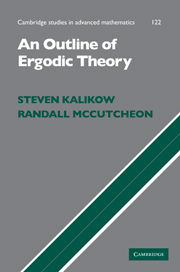6 - Ornstein isomorphism theorem
Published online by Cambridge University Press: 05 June 2012
Summary
In this chapter we prove the Ornstein isomorphism theorem, which states that any two finitely determined processes of the same entropy are isomorphic. In particular, since Bernoulli processes are finitely determined, this establishes that any two Bernoulli processes of equal entropy are isomorphic. (An earlier, related result of Sinai (1964) has, as a consequence, that any two Bernoulli processes of equal entropy are weakly isomorphic; i.e. each is a factor of the other. Both may be viewed as limiting, stationary versions of Shannon's (1948) noiseless coding theorem (1948).) Several (substantively different) proofs of Ornstein's theorem have been published; to the best of our knowledge, the one presented here adds to the variety. The closest match to our proof may be the proof of J. Kieffer (1984). Like Kieffer, we avoid the use of a marriage lemma.
568. Comment. In this chapter it is necessary to assume that our process is invertible (see, however Hoffman and Rudolph 2002, in which a condition is given for some non-invertible processes to be isomorphic to a one-sided Bernoulli shift). Also, though we restrict attention to the finite entropy case, the theorem has an infinite entropy version; see Ornstein (1970b).
Copying in distribution
In this section, we show that, given a process on a finite alphabet and a second system, we can construct a partition of the second system so that the second system with this partition is close in distribution to the first process. The reader should think of this as a very minor step in the direction of establishing an isomorphism. (It has to be minor, because you can do it for non-isomorphic systems!)
- Type
- Chapter
- Information
- An Outline of Ergodic Theory , pp. 124 - 145Publisher: Cambridge University PressPrint publication year: 2010



